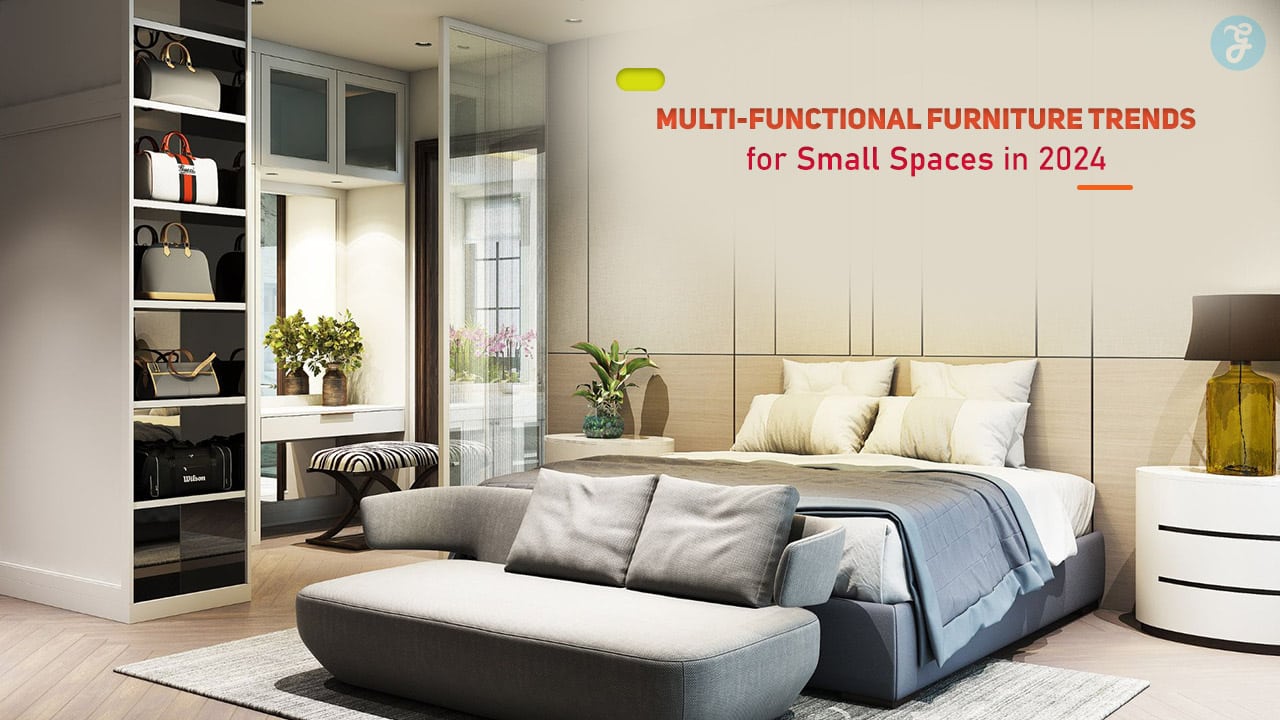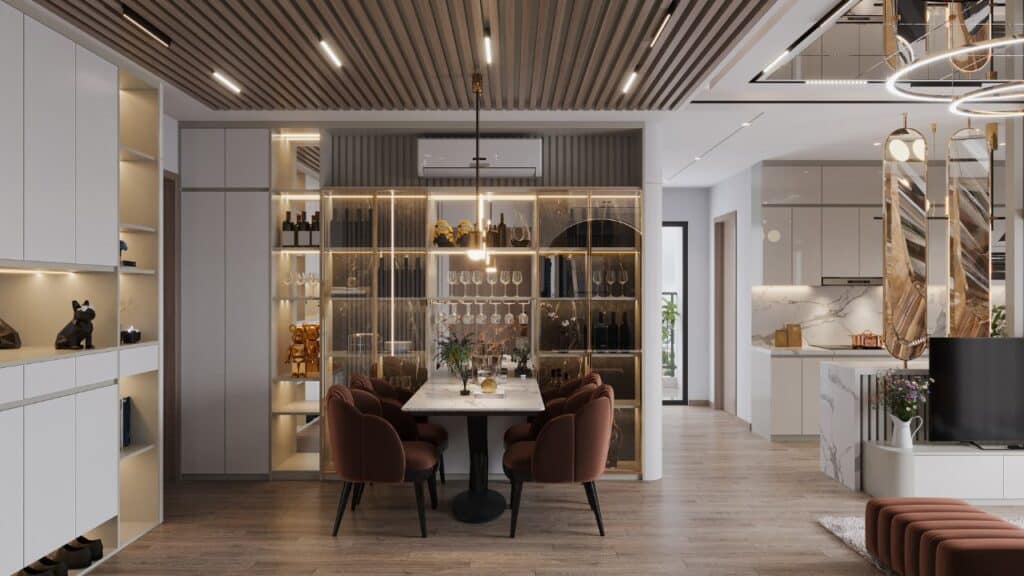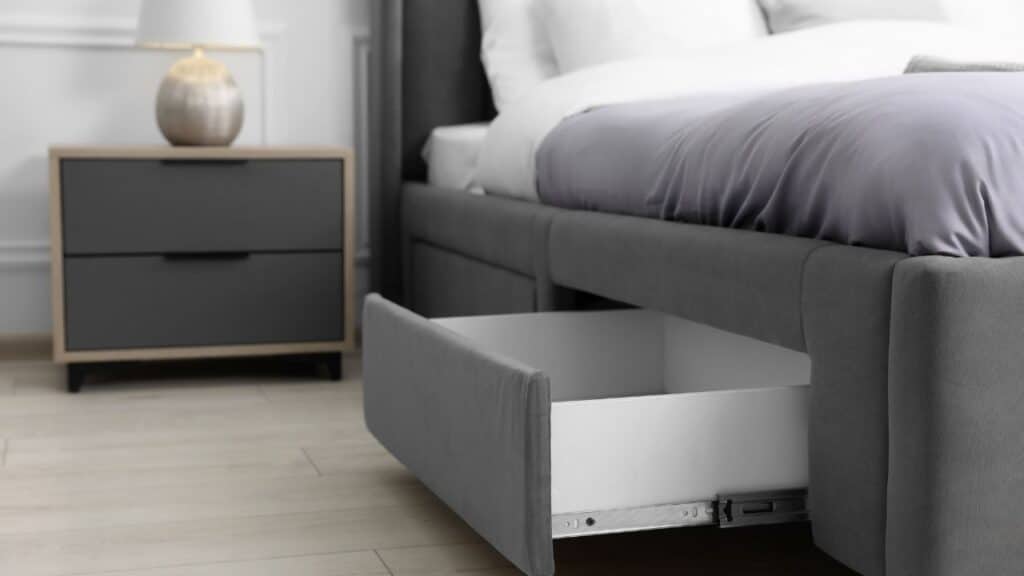Living in small spaces has become increasingly common in urban areas worldwide. According to the National Association of Realtors, the average living space per person has decreased by 15% in major cities over the past decade. This shift has sparked a revolution in furniture design, leading to innovative solutions that maximize functionality without compromising style.
In 2025, multi-functional furniture trends aren’t just a trend—they’re becoming a necessity for modern living.
1. Smart Murphy Beds with Integrated Office Spaces
The revolution in home office furniture has reached new heights with the reinvention of the classic Murphy bed. As remote work becomes a permanent fixture in our lives, furniture designers have reimagined these space-saving beds to create comprehensive work-from-home solutions.
What was once a simple fold-down bed has transformed into a sophisticated system that seamlessly transitions between peaceful rest and productive work environments. The integration of smart technology and ergonomic design principles has made these units the cornerstone of modern studio apartment living.
Key Features:
- Built-in LED lighting systems
- USB charging ports and power outlets
- Adjustable desk heights
- Hidden storage compartments
- Soundproofing panels for video calls
Market Impact:
Sales of Murphy bed systems increased by 127% between 2020 and 2025, with the average unit price ranging from $2,000 to $5,000. Manufacturers report that 73% of buyers choose models with integrated workspace features.
Design Innovations:
- Hydraulic lifting mechanisms
- Smart sensors for easy operation
- Modular desk components
- Built-in cable management
- Customizable storage solutions
2. Modular Sofa Systems with Storage Integration
Gone are the days when sofas served only as seating solutions. The modern modular sofa has evolved into a dynamic piece of furniture that adapts to various living situations and storage needs. These innovative systems represent the perfect blend of comfort, functionality, and space efficiency.
With rising real estate costs driving the need for smarter furniture solutions, manufacturers have responded with designs that transform living rooms into multi-purpose spaces without compromising on style or comfort.
Popular Features:
- Removable sections for custom configurations
- Hidden storage compartments under seats
- Pull-out bed mechanisms
- Adjustable backrests and armrests
- Integrated wireless charging pads
Consumer Benefits:
- There is 40% more storage space compared to traditional sofas.
- Reduced need for additional storage furniture
- Easy reconfiguration for different activities
- Enhanced durability through a modular design
- Better value for money over time
Market Trends:
The modular sofa market has seen 34% growth in 2025, with eco-friendly materials and smart technology integration driving consumer interest.
3. Expandable Dining Solutions
Dining spaces in modern homes need to be as flexible as our lifestyles. The latest expandable dining solutions represent a dramatic shift from traditional fixed dining tables, offering incredible versatility for both daily use and entertaining.
These innovative designs acknowledge that dining areas often need to double as workspaces or study zones, making them essential for contemporary living. The engineering behind these solutions focuses on smooth transitions and sturdy construction.
Popular Designs:
- Console-to-dining table transformers
- Drop-leaf wall-mounted tables
- Nested table sets
- Height-adjustable surfaces
- Rotating expansion mechanisms
Space-Saving Statistics:
- Average space savings: 70% when collapsed
- Setup time: Less than 60 seconds
- Weight capacity: Up to 200 pounds
- Durability: 10+ years with proper maintenance
Consumer Adoption:
Survey data shows that 82% of urban apartment dwellers prefer expandable dining solutions over traditional fixed tables.
4. Multi-Purpose Kitchen Islands
Modern kitchen islands make the heart of the home even more central. These versatile units have transcended their original purpose to become the true command centers of modern living spaces.
In response to the growing trend of open-concept living, designers have reimagined kitchen islands as multi-functional hubs that can handle everything from food preparation to remote work. The latest designs incorporate technology and storage solutions that make these islands indispensable in contemporary homes.
Key Features:
- Retractable work surfaces
- Built-in appliance storage
- Fold-out dining areas
- Mobile designs with locking casters
- Integrated charging stations
Functionality Benefits:
- This product enhances kitchen storage by up to 60%
- It reduces the need for separate dining furniture.
- Improves workflow efficiency
- Enhances social interaction during cooking
- Provides flexible workspace options
Design Trends:
- Sustainable materials (bamboo, recycled metals)
- Smart technology integration
- Modular storage components
- Anti-bacterial surfaces
- Energy-efficient lighting
5. Transformable Storage Walls
Transformable storage walls are revolutionizing the underutilized vertical dimension of living spaces. These innovative systems turn ordinary walls into dynamic storage and activity zones, maximizing every inch of vertical space.
Drawing inspiration from Japanese and Scandinavian design principles, these solutions offer unprecedented flexibility in space utilization while maintaining clean, modern aesthetics. The integration of smart technology has made these systems more user-friendly than ever.
Common Features:
- Sliding panel systems
- Integrated entertainment centers
- Pull-down desks
- Rotating storage units
- Adjustable shelving
Space Optimization:
- Vertical storage utilization: up to 90%
- Customizable configurations
- Hidden storage capacity
- Minimal floor space requirements
- Easy access to all items
Market Growth:
The storage wall segment has experienced a 45% increase in demand, with customizable solutions leading the market.
6. Smart Bedroom Storage Solutions
The bedroom has evolved from a simple sleeping space to a multi-functional retreat that must accommodate storage, work, and relaxation needs. Modern bedroom furniture designs recognize this shift and incorporate clever storage solutions that maintain the peaceful atmosphere essential for good rest.
The latest innovations in this category focus on creating harmony between functionality and tranquility, ensuring that storage solutions enhance rather than detract from the room’s primary purpose.
Popular Elements:
- Hydraulic storage beds
- Wardrobe-desk combinations
- Multi-level storage headboards
- Sliding door systems
- Corner optimization units
Storage Efficiency:
- Under-bed storage capacity: Up to 40 cubic feet
- Vertical storage utilization: Up to 85%
- Accessibility rating: 9/10
- Assembly time: 2-3 hours
- Average lifespan: 15+ years
Consumer Preferences:
Studies show that 77% of homeowners prioritize storage capacity in bedroom furniture purchases.
7. Compact Home Office Pods
The pandemic-driven shift to remote work has permanently altered our approach to home office spaces. Compact home office pods represent the latest evolution in this transformation, offering private, professional workspaces within existing living areas.
These self-contained units provide the perfect solution for those seeking to maintain work-life boundaries without dedicating an entire room to office space. The latest designs incorporate lessons learned from years of remote work experience, creating environments that enhance productivity and well-being.
Key Features:
- Sound-insulated walls
- Built-in lighting and ventilation
- Compact desk solutions
- Storage integration
- Portable design options
Market Statistics:
- Average size: 40-60 square feet
- Installation time: 4-6 hours
- Sound reduction: Up to 40 decibels
- Energy efficiency rating: A+
- Return on investment: 85%
Adoption Rates:
Home office pod installations increased by 156% in 2025, with urban areas showing the highest demand.
Consumer Buying Guide
Factors to Consider:
- Available space dimensions
- Primary function requirements
- Secondary function needs.
- Budget constraints
- Installation requirements
- Maintenance needs
- Warranty coverage
Investment Guidelines:
- Entry-level multi-functional pieces: $500-$1,500
- Mid-range solutions: $1,500-$3,000
- Premium installations: $3,000-$10,000+
Return on Investment:
- Space optimization: 25-40%
- Energy efficiency: 15-30%
- Property value increase: 5-10%
Sustainability Trends
Environmental Impact:
- Reduced material usage: 30-50%
- Lower carbon footprint: 25%
- Increased use of recyclable materials
- Extended product lifespan
- Reduced packaging waste
Material Innovations:
- Bamboo composites
- Recycled plastics
- Sustainable hardwoods
- Eco-friendly fabrics
- Low-VOC finishes
Future Outlook
We expect the multi-functional furniture market to continue its growth trajectory, with several emerging trends:
Upcoming Innovations:
- AI-integrated furniture systems
- Self-assembling components
- Advanced material technologies
- Enhanced customization options
- Improved sustainability features
Market Projections:
- Expected market size by 2025: $13.8 billion
- Annual growth rate: 6.2%
- Innovation investment: $1.2 billion
- Market penetration: 45%
Conclusion
The evolution of multi-functional furniture in 2025 represents a significant shift in how we approach living space optimization. These seven trends showcase the industry’s response to changing lifestyle needs, combining innovation with practicality.
As urban living spaces continue to shrink and remote work becomes more prevalent, the demand for smart, space-saving solutions will only increase. The future of furniture design lies in creating pieces that not only save space but enhance our daily living experience through thoughtful integration of technology and functionality.













































